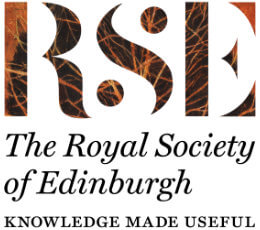What is singing for lung health?
Singing for lung health, also known as singing for breathing, is a health intervention for individuals living with chronic respiratory illness which cause breathlessness, such as Chronic Obstructive Pulmonary Disease (COPD), emphysema, and bronchiectasis. It is also useful for individuals who experience breathlessness through panic and anxiety. New practice and research is also being developed for the use of singing to manage Long Covid, including a new project by Scottish Opera. The first respiratory singing practice was established in 2007 as a pilot project in the Royal Brompton Hospital. Since then, singing as a respiratory health tool has grown in practice, with over 100 groups in the UK. In the Scottish context, The Cheyne Gang singing for breathing charity currently run 7 groups across Edinburgh, Glasgow and the Boarders, St Andrew’s Voices run workshops (currently online), and individual practitioners run sessions across Scotland, as our Map will indicate. Singing for lung health has also grown as a topic of research, where studies have illustrated the benefits of singing as part of the management of respiratory conditions.
Singing for breathing practice has developed breathing exercises that help to encourage deep breathing practice (sometimes known as diaphragmatic breathing), where breath is supported by the abdominal muscles. Using specific breathing exercises, as well as carefully planned song phrasing helps to teach individuals this deep breathing practice as part of a self-management strategy. Here, an individual is given the tools to learn to live well with their illness – such as using breathing exercises in moments of breathlessness to steady the breath. Breathing techniques therefore help individuals to gain agency over their breath and body, resulting in improved quality of life.
Singing for breathing has also been developed as a form of pulmonary rehabilitation, where singing acts as physical exercise that helps to build stamina. Songs often build in movement, dance and aerobic activity in a safe and managed space. In addition, groups often offer relaxation and mindfulness exercises which can help to steady the breath and offer calming exercises for moments of panic or anxiety in day-to-day life.
The Scottish Government has named singing clubs as an important intervention for providing peer support for individuals living with chronic respiratory illness in the Respiratory Care Action Plan: 2021-2026. Alongside providing the tools for the self-management of breathlessness, peer support is a critical aspect of singing for breathing groups. This social dimension of singing group particularly significant as chronic illness such as respiratory illness has been shown to cause social isolation. Furthermore, social disconnectedness and perceived isolation can contribute to further health related consequences, such as depression. Depression and anxiety are prevalent in individuals living with COPD, particularly associated with decreased mobility and to feelings of morbidity. In the UK, the National Institute of Clinical Excellence COPD Guidelines estimates the incidence of depression in COPD to be 40% (36–44%) and indicates that anxiety symptoms may have a 36% (31–41%) prevalence. Group singing has been shown to mitigate loneliness among individuals who are socially isolated, and therefore can play an important role in enabling individuals to live well with their illness.
Want to find a Singing for Lung Health group in your area?
![]() If you would like to find a Singing for Lung Health group in your area, please visit see the Scotland’s Singing for Health Map. Singing for Lung Health groups are marked with a orange and white heart.
If you would like to find a Singing for Lung Health group in your area, please visit see the Scotland’s Singing for Health Map. Singing for Lung Health groups are marked with a orange and white heart.
Useful resources
https://www.blf.org.uk/support-for-you/breathe-easy
What does the research say and how can I access it?
Research carried out over the past decade has established singing as an important social and physical health intervention for individuals with respiratory illness. There are several open-access studies available where you can learn more about singing and lung health practices. Here is a selection of studies, evaluations, and literature reviews:
Clift, S., Skingley, A., Page, S., Stephens, L., Hurley, S., Dickinson, J., Meadows, S., Levai, I., Jackson, A., Sullivan, R., Wren, N., Mcdaid, D., Park, A.-L., Azhar, S., Baxter, N., Rozenthuler, G., Shah, S. and De Haan, S. (2017) Findings from the Lambeth and Southwark Singing and COPD Project. Canterbury: Sidney De Haan Research Centre for Arts and Health.
Drury, R. (2014) Evaluation of Breath Cycle. Scottish Opera and Gartnavel General Hospital Cystic Fibrosis Service – Report for Scottish Opera and NHS Greater Glasgow and Clyde
Lewis, A., Philip, K., Lound, A., et al. The physiology of singing and implications for ‘Singing for Lung Health’ as a therapy for individuals with chronic obstructive pulmonary disease BMJ Open Respiratory Research 2021; 8:e000996. doi: 10.1136/bmjresp-2021-000996
Lewis, A., Platt, J., Gent, P., Cave, P. and Young R. (2018) The Lung Cycle – a day of creative investigation into singing for breathing
McNaughton, A., Weatherall, M., Williams, M., McNaughton, H., Aldington, S., Williams, G., & Beasley, R. (2017). Sing Your Lungs Out-a community singing group for chronic obstructive pulmonary disease: a 1-year pilot study. BMJ open, 7(1), e014151. https://doi.org/10.1136/bmjopen-2016-014151
Philip, K. E., Lewis, A., Buttery, S. C., McCabe, C., Manivannan, B., Fancourt, D., Orton, C. M., Polkey, M. I. and Hopkinson, N. S. (2021) ‘Physiological demands of singing for lung health compared with treadmill walking’, BMJ Open Respiratory Research, 8(1), p. e000959. doi: 10.1136/bmjresp-2021-000959.
Philip, K., Lewis, A. and Hopkinson, N. S. (2019) ‘Music and dance in chronic lung disease’, Breathe, 15(2), pp. 116–120. doi: 10.1183/20734735.0007-2019.
Philip KE, Lewis A, Jeffery E, Buttery S, Cave P, Cristiano D, Lound A, Taylor K, Man WD, Fancourt D, Polkey MI, Hopkinson NS. (2020) Moving singing for lung health online in response to COVID-19: experience from a randomised controlled trial. BMJ Open Respir Res. 2020 Nov;7(1):e000737. doi: 10.1136/bmjresp-2020-000737. PMID: 33239406; PMCID: PMC7689537.
There are also Restricted-access research papers where you are able to view the abstract and key information about the study or literature review:
Goldenberg, R. B. (2018) ‘Singing Lessons for Respiratory Health: A Literature Review’, Journal of Voice. Elsevier Inc., 32(1), pp. 85–94. doi: 10.1016/j.jvoice.2017.03.021.
Kang, J., Scholp, A. and Jiang, J. J. (2018) ‘A Review of the Physiological Effects and Mechanisms of Singing’, Journal of Voice. Elsevier Inc., 32(4), pp. 390–395. doi: 10.1016/j.jvoice.2017.07.008.
Lewis, A., Cave, P. and Hopkinson, N. S. (2018) ‘Singing for Lung Health : service evaluation of the British Lung Foundation programme’, Perspectives in Public Health, 138(4), pp. 215–222. doi: 10.1177/1757913918774079.
Skingley, A., Clift, S., Hurley, S., Price, S. and Stephens, L. (2018) ‘Community singing groups for people with chronic obstructive pulmonary disease: participant perspectives’, Perspectives in Public Health, 138(1), pp. 66–75. doi: 10.1177/1757913917740930.
Sophie Boyd



